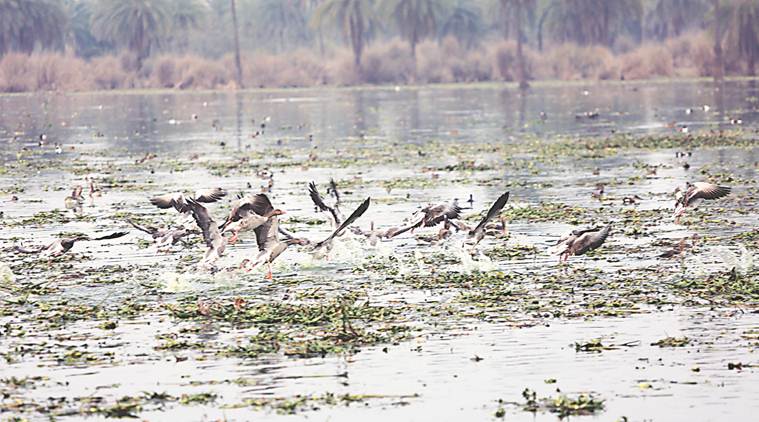
A rare bird has joined the flock of migratory birds which fly for shelter from across the world to Surajpur Wetlands. Forest authorities say the Asian Desert Warbler, a type of woodland bird, has been spotted in the Surajpur marshes by conservationists and bird watchers.
“These are winter migrant birds which belong to the region of central and western Asia and parts of eastern Europe. They do not fly together in large numbers and it is estimated that approximately four such birds are present in the wetland. They are small in size and light brown in colour. Similar other woodland birds, like woodpeckers, can be distinguished by the sounds they make,” said Ramavtar Singh, forest guard at the Surajpur Wetlands in which the bird sanctuary is located.
The Desert Warblers prefer making houses in trees and shrubs that are lower in elevation, officials said. “The wetlands are a hotspot for both aquatic and terrestrial animals. This is why it is feasible for different species to find food and shelter here,” said Singh. The warbler has been categorised as ‘Least Concern’ in the International Union of Conservation of Nature list.
Apart from Asian Warbler, the near-threatened black-necked stork has been an added attraction at the wetlands. A male and a female returned to make a canopy-like nest on a tree and have been breeding this season, officials said. Despite pollution impacting water table levels, the number of migratory birds has spiked from 1,920 birds of 31 species in 2017-2018 to 3,034 birds of over 40 species in 2018-19.
“Being situated in the middle of an urban pocket, the wetlands face threats due to man-made activities. We were planning to build a guest house and other facilities inside the marshland, but stopped after the NGT order that banned construction. The number of birds visiting is an indication of a healthy wetland. We hope to continue the trend”, said Pramod Kumar Srivastava, divisional forest officer (Gautam Budh Nagar).